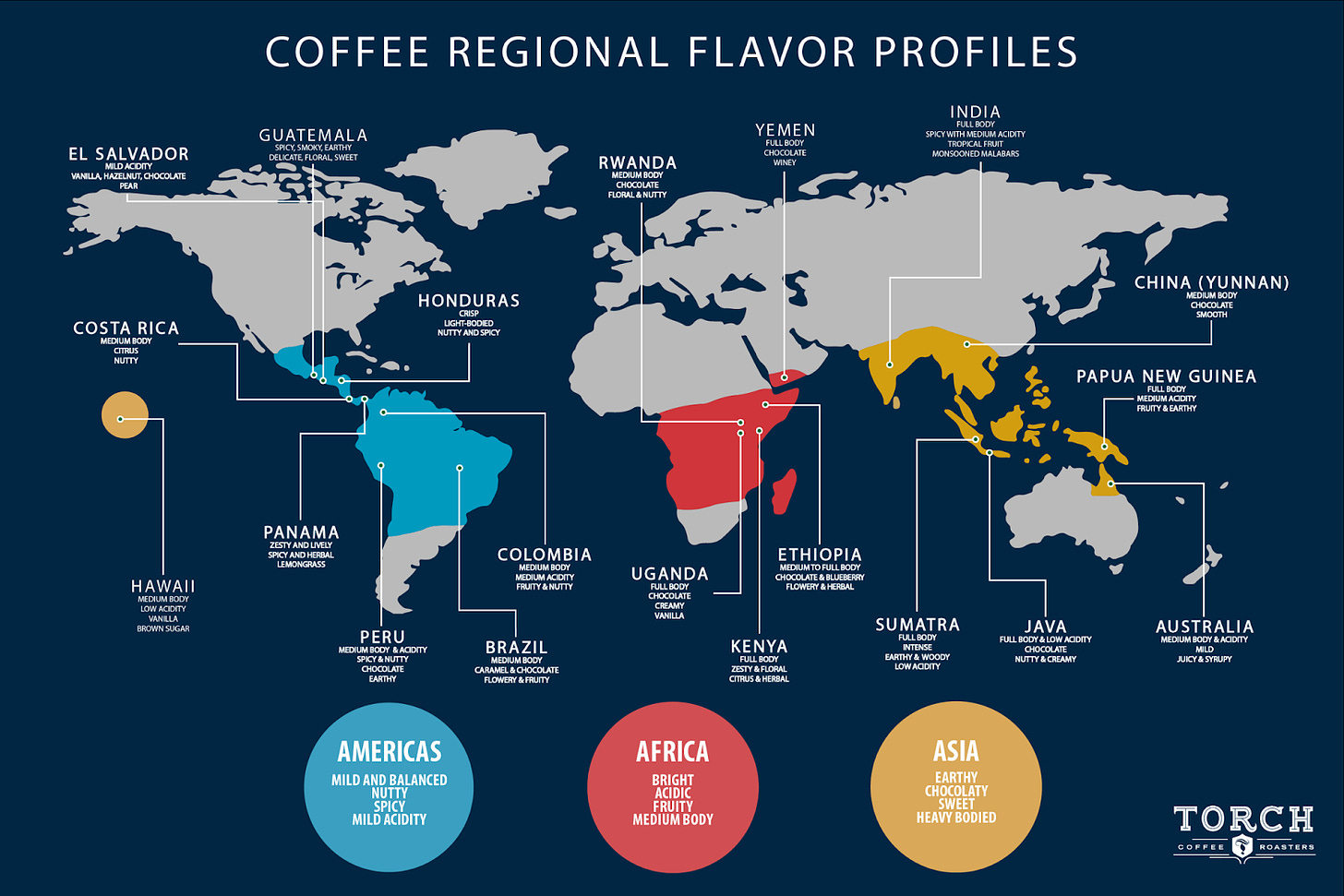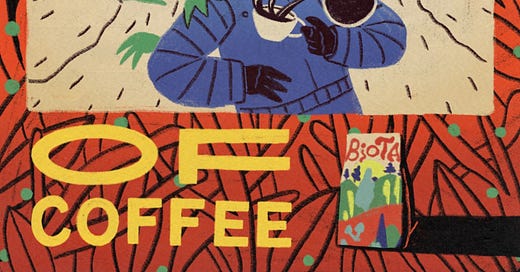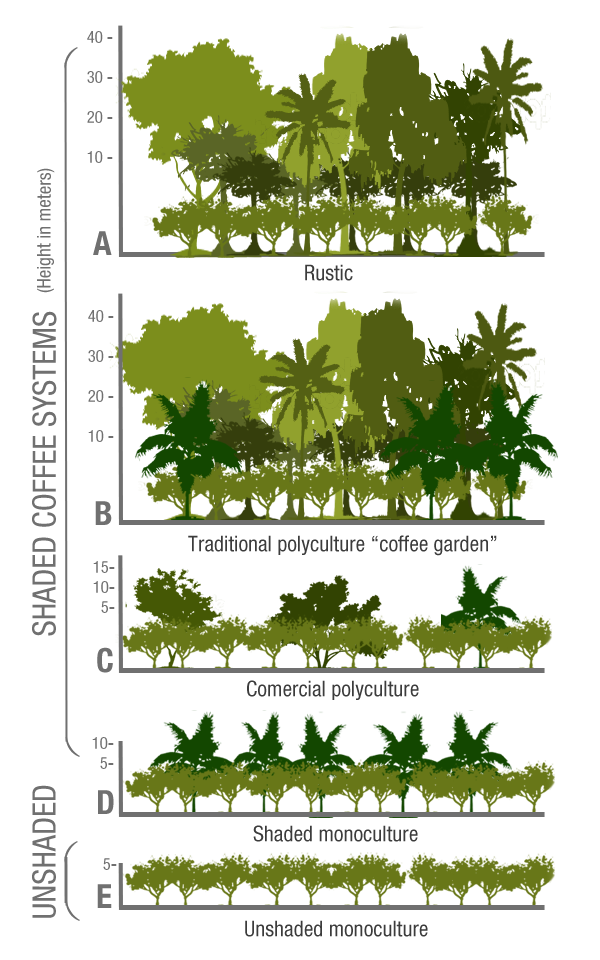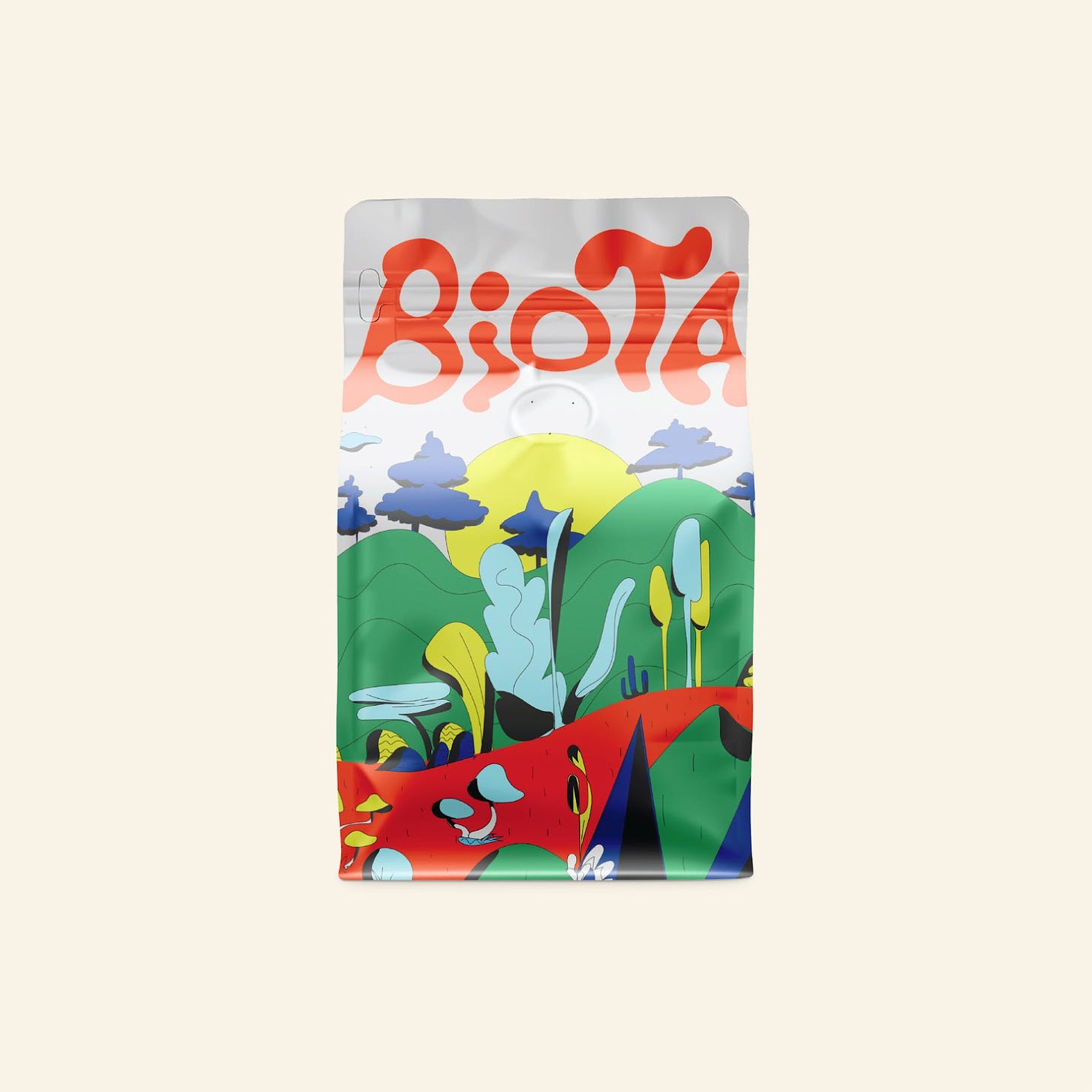☕The Inevitability of Regenerative Coffee?
Innovation: Every day we “vote with our wallets” by deciding what we put in our bodies. Many of us make one particular choice with environmental repercussions 2-5 times a day: drinking a nice cup of coffee. Coffee will be a paradigmatic case study of an industry embracing regenerative practices not necessarily because it is the right thing to do, but due to necessity stemming from the failures of industrial production. If we want to keep consuming coffee at the pace we do now, regenerative agroforestry will need to become the norm in the coming decades. This will be done by new brands focused on both providing producers pathways to regenerative practices and marketing environmental outcomes to consumers, as well as corporates who recognize the necessity of systemic change.
To understand the why, let’s dive into the current state of coffee production. Rather than growing in forested, canopied areas as occurs naturally, a plurality of coffee is now grown in “sun-grown” monocultures that are continually exposed to sunlight and as densely as possible to maximize yield (though such assumptions are not necessarily true, as recent academic literature suggests). 25% of the world’s coffee is managed under diverse shade, 35% under partial shade, and 40% under full-sun conditions. This approach degenerates the soil, reduces biodiversity, and erodes the longevity of the land. Diverse shaded conditions have decreased dramatically since 1996 when it represented ~43% of coffee-producing land area. Humanity consumes 2.25 Bn cups of coffee daily, only intensifying an already devolving feedback loop between coffee and climate desertification.
Given that coffee is optimally produced in a narrow equatorial belt, real estate is particularly valuable - if this specific subset continues to erode, coffee supply will not be able to keep pace with the continued growing demand. Changing climatic conditions present the most overriding concern. Coffee plants are quite sensitive to the sun, wind, and temperature. Between 55-62% of current areas for coffee production will be unsuitable for production by 2050, according to recent studies. Though some highlands will come online for coffee production, it will not nearly be enough. In particular, Latin America faces losing up to 90% of its coffee production due to bee species loss, temperature rises, and loss of arable land.

All in all, a “climate coffee catastrophe” appears on the horizon. The increased financial precarity from this dynamic creates a gaping hole in terms of producer profiles too. There are roughly 12.5 million smallholder coffee farms across the globe, of which 44% live below the poverty line. 70% of the world's coffee supply comes from small farmers, who are vulnerable to supply chain changes (be it from market dynamics or climatic conditions). And as a cherry on top, the global presence of coffee leaf rust is only further accelerated by increased temperatures and sun-grown monocultures. Coffee leaf rust can be more severe in deforested, densely packed coffee production sites. The coffee leaf rust epidemic, which has historically decimated the industry’s hubs, can lead to individual farms ceasing coffee production or adopting plant variants with some resistance to the fungus, though it’s only a matter of time that the coffee leaf rust overcomes said resistance.
Right now, there are roughly 10.5 million hectares under coffee production in over 50 countries, including 72% of coffee species growing in “paper parks”, which are protected areas with lax enforcement. In an industry dominated by two varieties of beans - arabica beans, which are temperature restricted to 64-73 degrees Fahrenheit, and robusta beans, which are sensitive to dry soils- genetic diversity and ecosystem diversity will be crucial. There are 124 wild species of coffee that could help breeders, of which stenophylla has gained the most press as an alternative. Additionally, much more academic research and corporate pilot studies are coming online regarding regenerative agroforestry, and the results are promising. Regenerative agroforestry has:
Enables a multitude of ecosystem services: Though implementation of agroforestry requires technical expertise and upfront capital investment in selecting the right N-fixing trees and optimizing for sunlight management, the formation of the forest provides valuable soil erosion control, helps organic matter accumulate into the soil, helps increase water retention in the soil profile and recharge aquifers. Additionally, shade trees reduce wind speed and prevalence, helping pollinators and wildlife thrive. Shade trees also moderate the temperature of the coffee plantation, which benefits the plants (remember how temperature-sensitive arabica beans are) as well as a better working environment for laborers.
Combats Coffee Rust effectively: Shade-grown farms also provide significant and sustainable defenses against coffee rust vis-a-vis a sun-grown system. The first is that agroforestry reduces the wind needed for rust spores to spread at scale. The second is that shade-grown coffee creates a conducive environment for Lecanicillium lecanii to grow, which preys upon coffee leaf rust. Additionally, specific species of snails and mites eat coffee rust spores. Natural biodiversity barriers can provide a firm defense against the coffee rust epidemic, though further research is needed.
Provides avenues to profitability and financial resiliency to producers: The diversified revenue streams coming from agroforestry coffee systems are becoming more widely accepted. For instance, bananas provide shade for coffee seedlings and cash flow for farmers until coffee plants flower. Coffee Banana intercropping can “increase total revenue per unit area by more than 50% compared to monocropped banana or coffee, without affecting coffee yield.” The sustainability of such systems allows the land to appreciate in value, as well as turn “paper park” projects into true conservation initiatives. This has occurred in Gorongosa National Park in Mozambique, where shade coffee, cashews, and honey are farmed, as well as intercropped with African mahogany. With the right conditions, you can even combine lamb and coffee in a silvopastoral system, with proven agronomic and economic benefits.
The uptake by the coffee industry bigwigs in the past few years perhaps shows the severity of this movement. Illy’s CEO stated that by 2050 three-fourths of arabica coffee growing land will not be suitable. He wants to replicate the coffee production of East Africa, where agroforestry is more prevalent still, to improve the quality of the coffee, improve the sustainability of practices, and generate carbon credits. Nestle, and in particular their Nespresso brand, have sought to “restore coffee ecosystems and inset their operational carbon footprint” by planting trees in the millions in and around coffee farms throughout Latin America and Kenya. Nestle also has invested in ReNature and the Pur Project to scale agroforestry. Consumers don’t need to just feel responsible about buying from brands with proven actions on coffee ecosystem restoration: a “syntropic agriculture” practitioner won the Best Coffee of the Year 2019 in Brazil.
As for my own opinion, I suggest buying from our good friends over at Biota Coffee! Biota is on a mission to cultivate specialty coffee that heals the planet.
The DTC company aims to discover a more regenerative model that satisfies our caffeine-needs needs while restoring soils, absorbing carbon, and rewarding smallholder farmers by:
Establishing long-term partnerships with growers to support their transition towards more sustainable practices.
Coordinating with in-country technicians to help their growers integrate regenerative farming methods that unlock ecological and economic benefits.
Documenting changes in microbial biodiversity, plant health, yields & revenues, cup quality, etc.
Sharing their insights with the world to empower the next generation of eco-conscious farmers and consumers.
Today, Biota is debuting Year O, its inaugural line of beans showcasing Guatemala’s famed Antigua region. You can use the code “REGEN10” for 10% off your first order.
Disclaimer: The Regeneration Weekly receives no compensation or kickbacks for brand features - we are simply showcasing great new regenerative products.
If you have any products you would like to see featured, please respond to this newsletter or send an email to Kevin(at)soilworksnaturalcapital.com
The Regeneration is brought to you by Wholesome Meats | Soilworks | Grassroots Carbon| Grazing Lands








